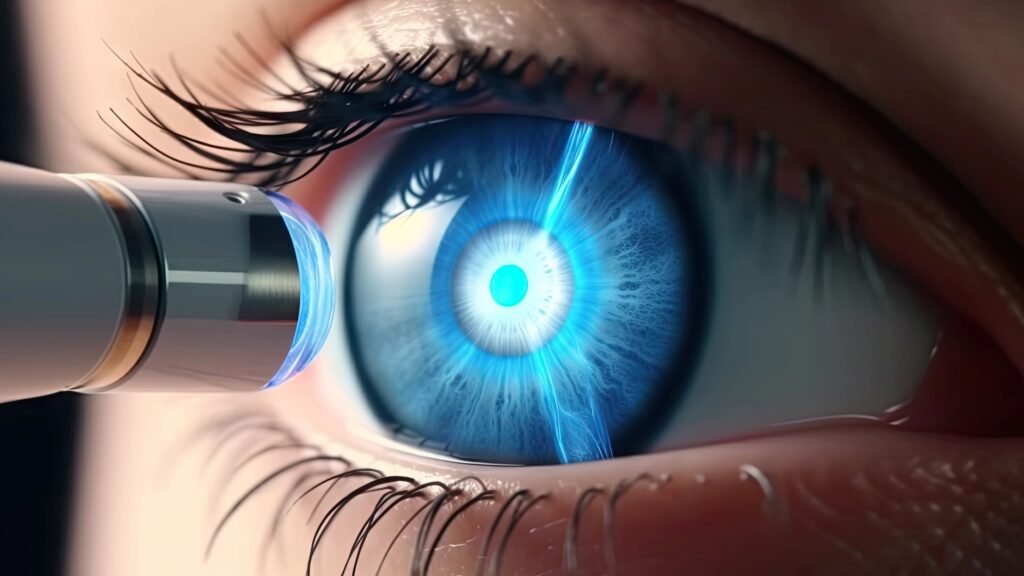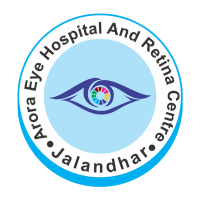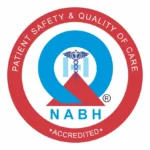
LASIK (Laser-Assisted In Situ Keratomileusis) has long been a popular choice for vision correction, offering significant improvements in vision for millions of people worldwide. However, as with all medical fields, advancements and innovations continue to emerge, offering even more refined options for those seeking to improve their vision. In this blog, we’ll delve into some of the newer refractive surgery modalities that are gaining attention: SMILE (Small Incision Lenticule Extraction) and SILK (Sub-Bowman’s Layer Keratomileusis).
SMILE: Precision and Minimal Invasiveness
SMILE is a cutting-edge procedure that stands out for its minimally invasive nature. It involves using a femtosecond laser to create a small, lens-shaped piece of tissue (lenticule) within the cornea, which is then removed through a tiny incision. This technique offers several advantages over traditional LASIK:
1. Reduced Dry Eye Symptoms: SMILE preserves more of the corneal nerves, potentially reducing the incidence of dry eye syndrome post-surgery.
2. Stronger Corneal Structure: The smaller incision helps maintain the integrity of the cornea, leading to a stronger overall structure.
3. Fewer Complications: The flapless nature of SMILE eliminates the risk of flap-related complications that can occur with LASIK.
LASIK (Laser-Assisted In Situ Keratomileusis) has long been
a popular choice for vision correction, offering significant improvements in
vision for millions of people worldwide. However, as with all medical fields,
advancements and innovations continue to emerge, offering even more refined
options for those seeking to improve their vision. In this blog, we’ll delve
into some of the newer refractive surgery modalities that are gaining
attention: SMILE (Small Incision Lenticule Extraction) and SILK (Sub-Bowman’s
Layer Keratomileusis).
SMILE: Precision and Minimal Invasiveness
SMILE is a cutting-edge procedure that stands out for its minimally invasive nature. It involves using a femtosecond laser to create a small, lens-shaped piece of tissue (lenticule) within the cornea, which is then removed through a tiny incision. This technique offers several advantages over traditional LASIK:
1. Reduced Dry Eye Symptoms: SMILE preserves more of the corneal nerves, potentially reducing the incidence of dry eye syndrome post-surgery.
2. Stronger Corneal Structure: The smaller incision helps maintain the integrity of the cornea, leading to a stronger overall structure.
3. Fewer Complications: The flapless nature of SMILE eliminates the risk of flap-related complications that can occur with LASIK.
SILK: The Next Frontier in Refractive Surgery
SILK is an innovative approach designed to provide high
precision with reduced risk. Although it is still in the early stages of adoption, SILK promises several benefits that could make it a preferred choice for patients and surgeons alike:
1. Enhanced Accuracy: By operating below the Bowman’s
layer, SILK aims to achieve a higher degree of accuracy in reshaping the
cornea.
2. Lower Risk of Ectasia: This technique potentially
lowers the risk of post-surgical ectasia, a condition where the cornea becomes
weakened and begins to bulge.
3. Improved Visual Outcomes: Early studies suggest that SILK may offer superior visual outcomes, with fewer side effects compared to
other methods.
Making the Choice: LASIK, SMILE, or SILK?
Choosing the right refractive surgery involves a detailed
consultation with an ophthalmologist, who will consider various factors such as corneal thickness, prescription strength, and overall eye health. Here’s a quick comparison to help guide the decision-making process:
SILK is an innovative approach designed to provide high precision with reduced risk. Although it is still in the early stages of adoption, SILK promises several benefits that could make it a preferred choice for patients and surgeons alike:
1. Enhanced Accuracy: By operating below the Bowman’s layer, SILK aims to achieve a higher degree of accuracy in reshaping the cornea.
2. Lower Risk of Ectasia: This technique potentially lowers the risk of post-surgical ectasia, a condition where the cornea becomes weakened and begins to bulge.
3. Improved Visual Outcomes: Early studies suggest that SILK may offer superior visual outcomes, with fewer side effects compared to other methods.
Making the Choice: LASIK, SMILE, or SILK?
Choosing the right refractive surgery involves a detailed consultation with an ophthalmologist, who will consider various factors such as corneal thickness, prescription strength, and overall eye health. Here’s a quick comparison to help guide the decision-making process:

Conclusion
While LASIK remains a highly effective and popular choice for vision correction, it’s exciting to see new advancements like SMILE and SILK pushing the boundaries of what’s possible in refractive surgery. These newer modalities offer promising benefits, from reduced invasiveness to potentially superior visual outcomes. As technology continues to evolve, patients have more options than ever to achieve clear vision with methods tailored to their unique needs. Always consult with a qualified ophthalmologist to understand the best option for your specific circumstances.

